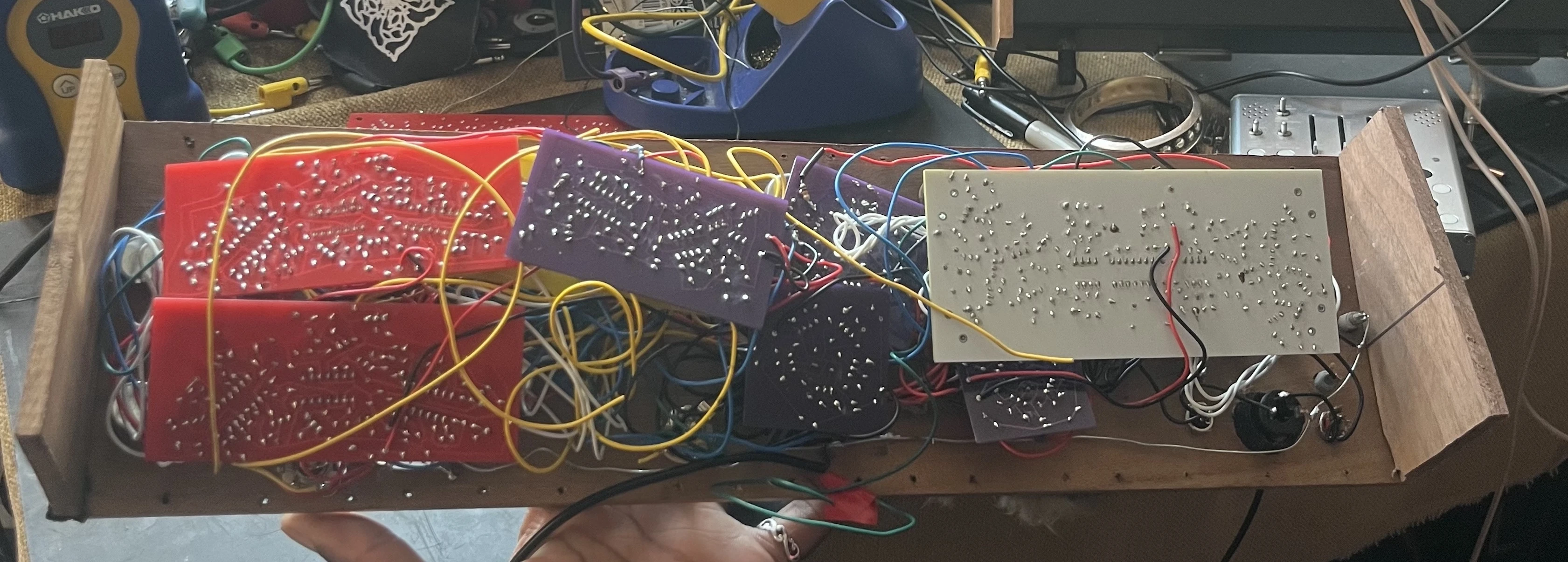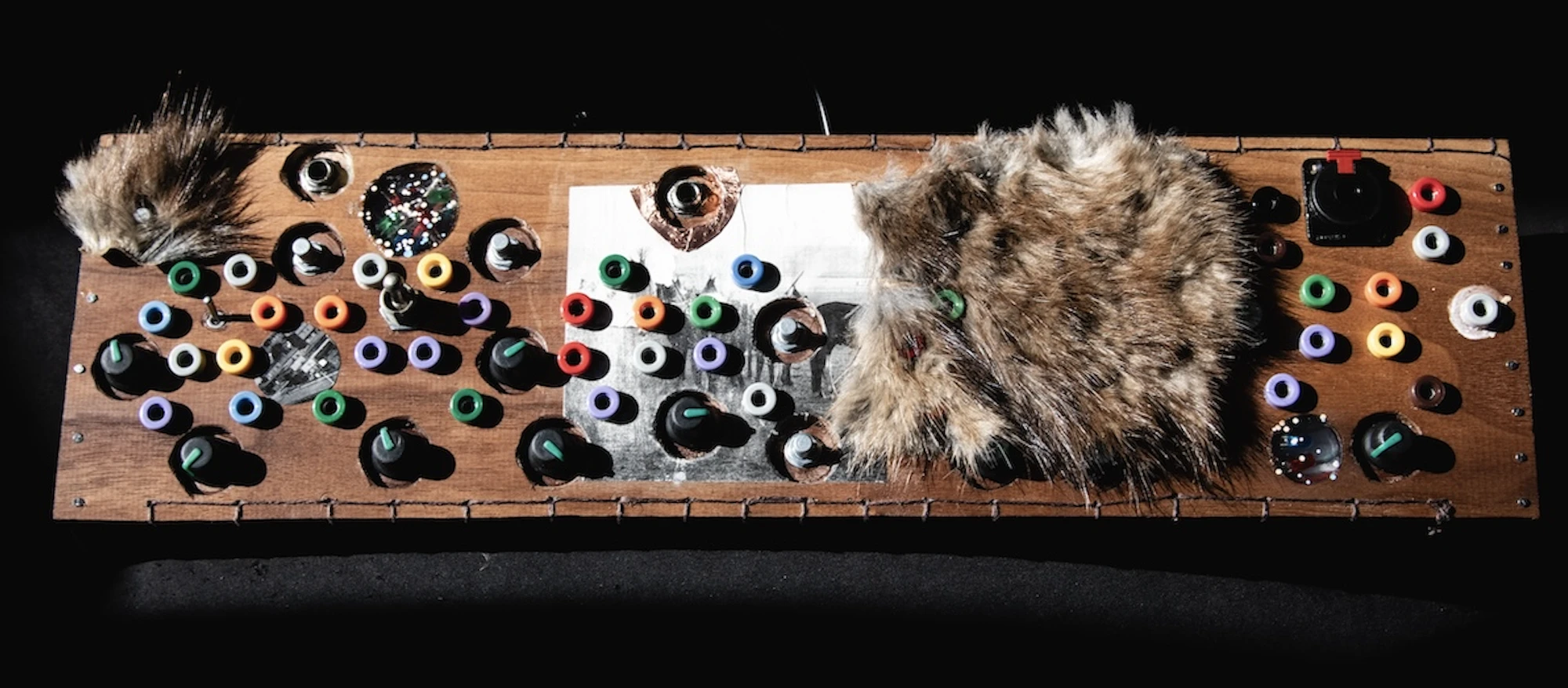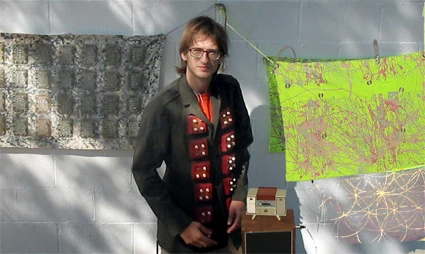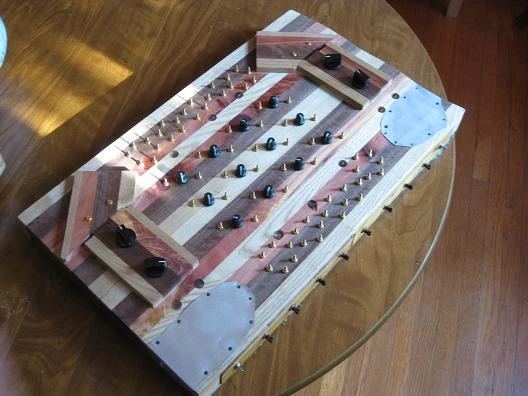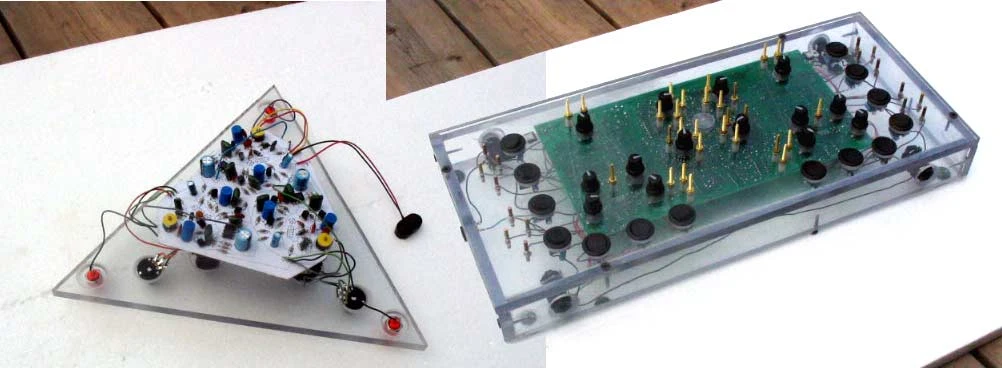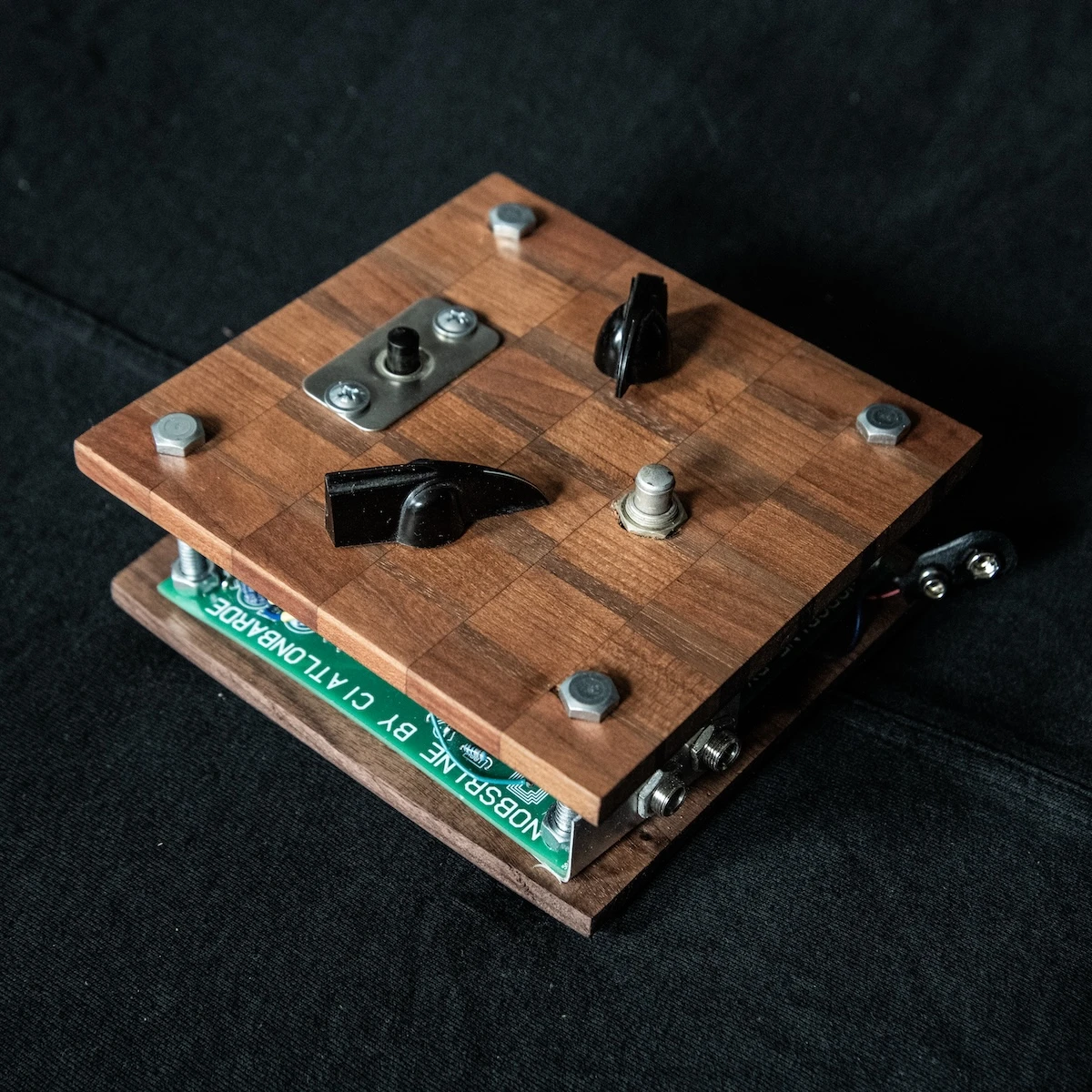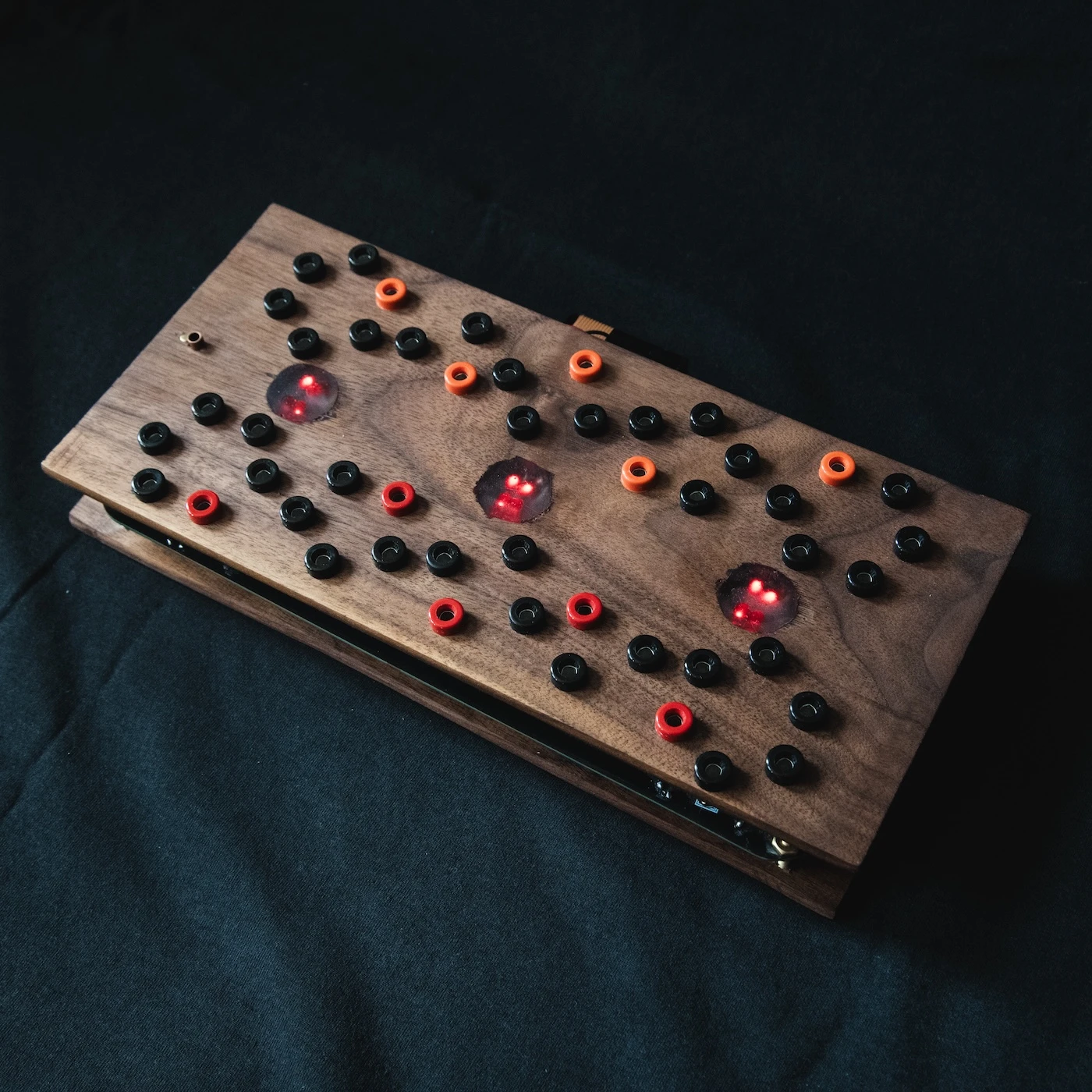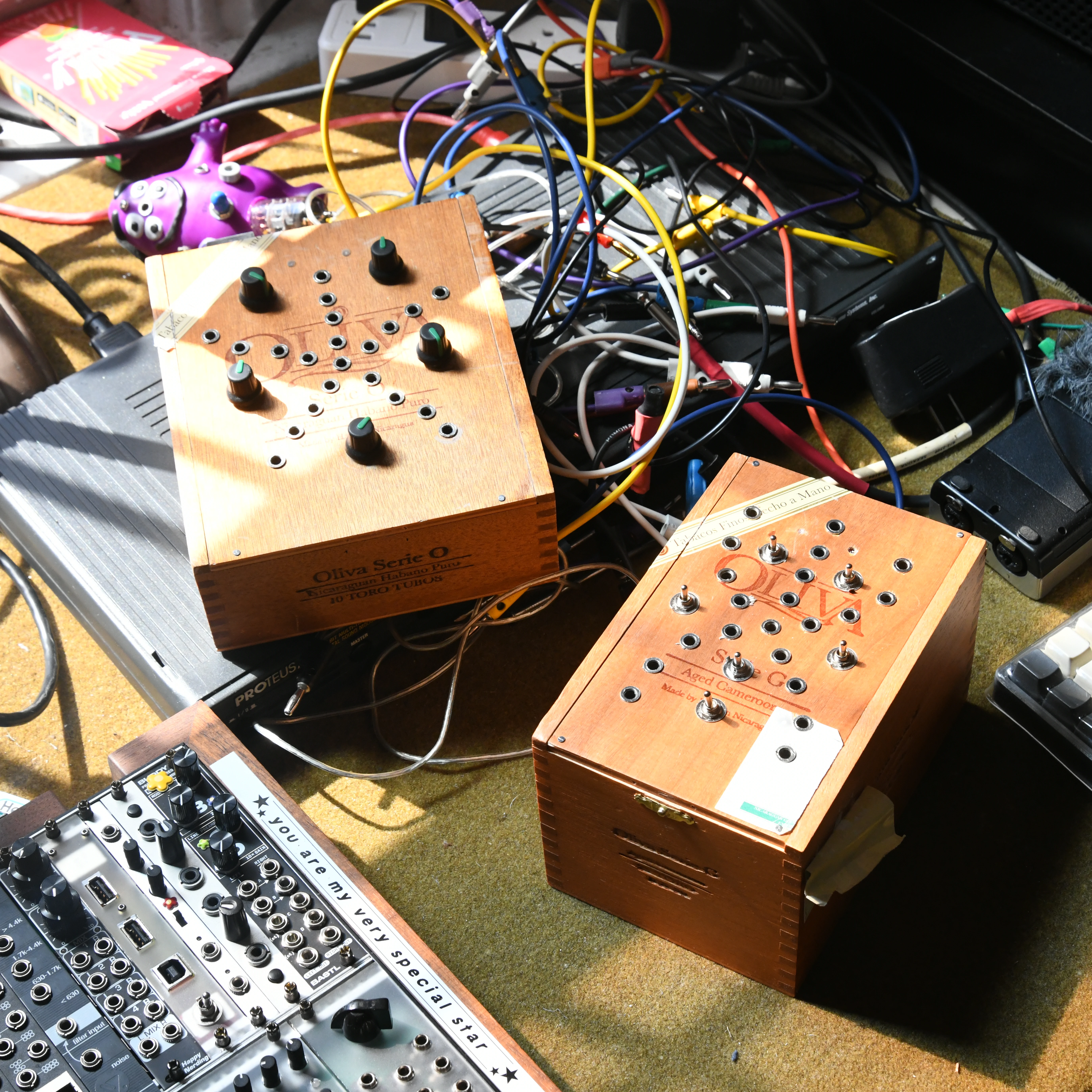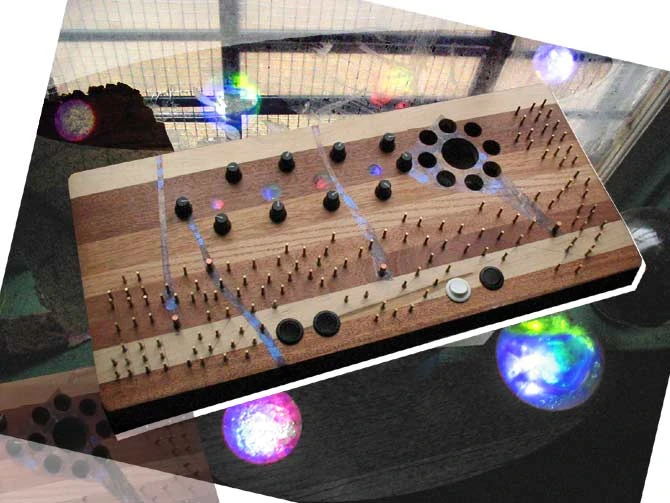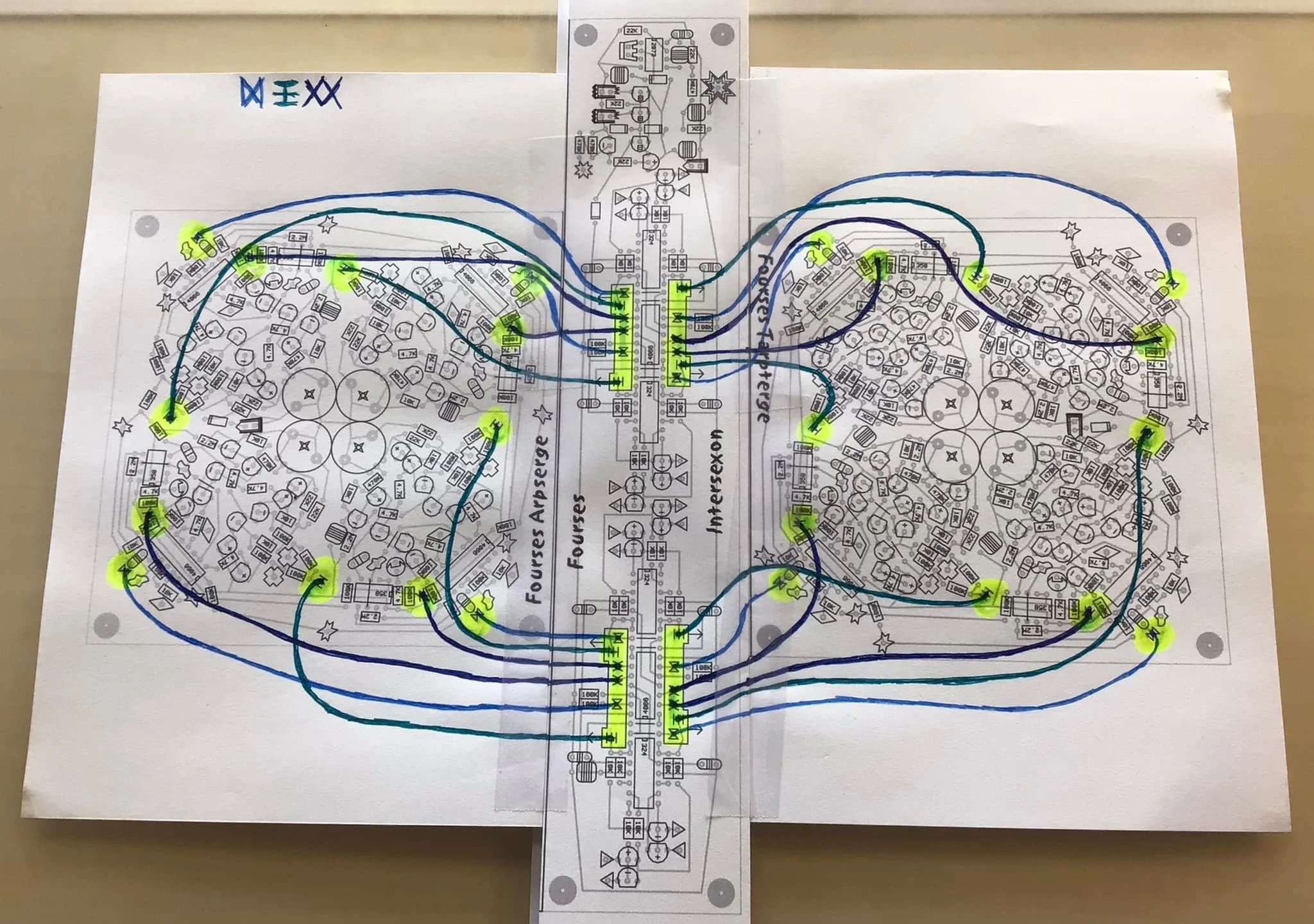Peter's circuits are like ancient foreign ruins, with many cryptic symbols and strange geometries. A lot of his circuit designs are influenced by geography, sound in nature, touch, gesture, wind and everything in-between. The master legend demystifies his paper circuits, and allows you to put these puzzles together relatively easily.
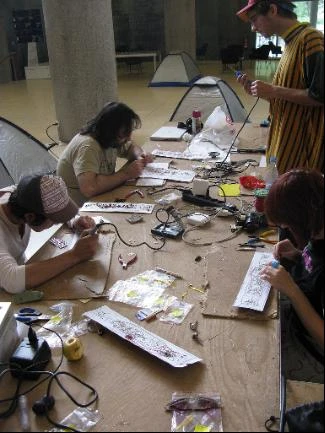
On paper circuits, from Peter: "PAPER CIRCUITS In 2006 I began making circuits on paper. Paper circuits are easier, cheaper, and environmentally safer than the alternative- greenboards etched with heavy chemicals at a factory. The idea, which I got from a St. Louis collective known as “commonsound”, puts front (component) face and back (trace) face adjacent and mirrored on the paper. The pattern is cut out, folded in the middle, then pierced with a needle. The components are inserted and their leads woven and soldered according to the trace pattern. I created several pocket-size paper circuits that explore touchability and the complexity of circular modulations. I play them by intuitively wiring or touching nodes to each other to create different re-weavings of the internal circuits. I consider these the most accessible of my designs; anyone can salvage or buy the components after downloading the plans from my website (www.ciat-lonbarde.net). Each build of a paper circuit is unique, because the time elements vary by changing values in key locations. The transcription of electronic ideas onto paper stimulates a free and open distribution of craft, where the final pieces vary based on the skills of the maker. This appeals to an ideal of medieval individuality, where information is distributed personally through guilds as well as mnemonically in spellbooks and mandalas. The paper circuit projects attempt to bring the art of electronics from an impersonal, industrial approach to one which is individual and magical. This crafty use of electronics encourages everyone who pursues it to personally reduce waste; creativity leads to resourcefulness and vice versa."
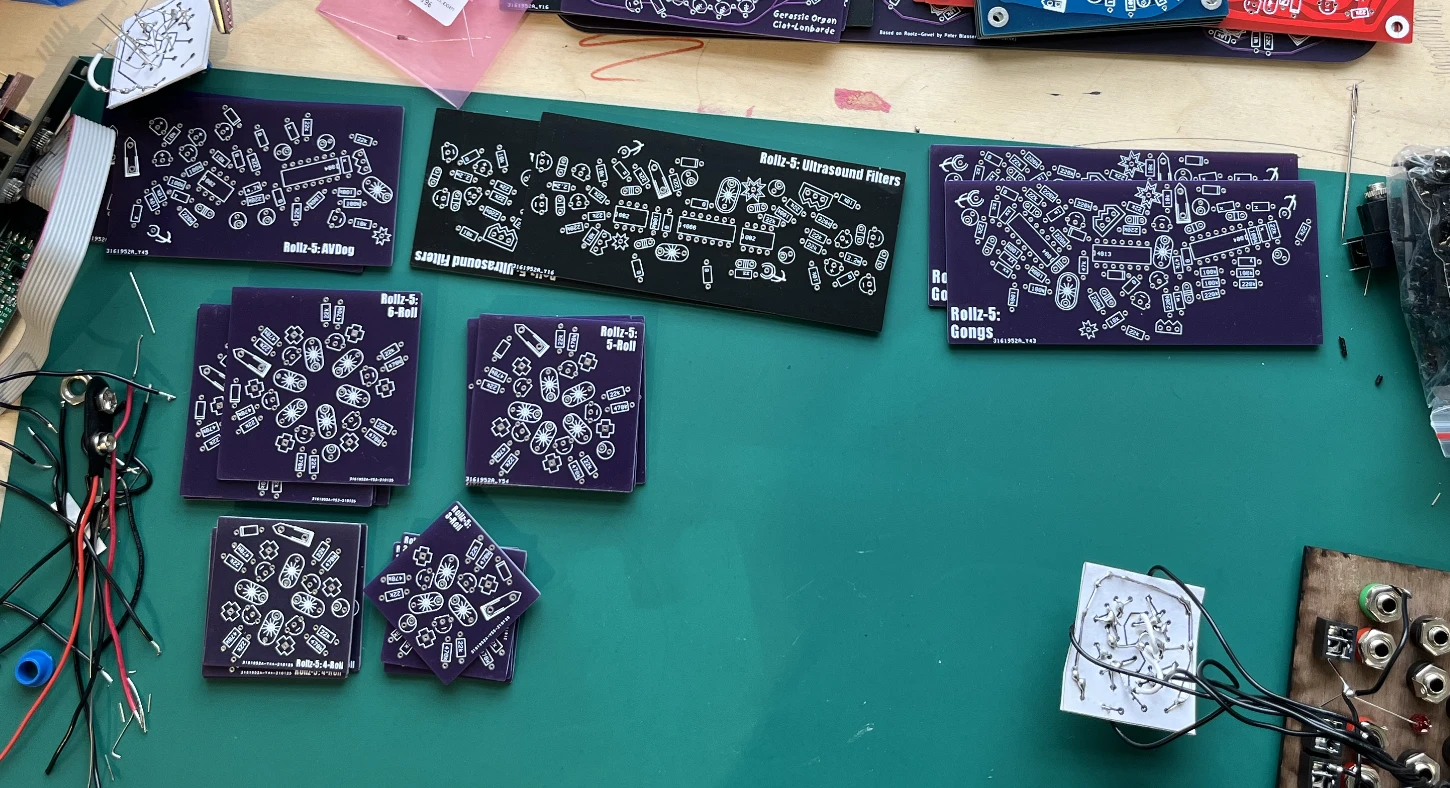
A paper circuit is a simple, flexible circuit made on paper with conductive ink or tape, ideal for educational, low-power projects. It's easy to create but not durable. In contrast, a PCB (Printed Circuit Board) is a durable, multi-layered circuit on a rigid material, used in commercial electronics for complex, high-power applications. Many people have converted or modified Peters papers and Osmond files to PCB gerbers for ordering from some online PCB manufacturer. One of the main contributors of this trend has been CrucFX, from which a lot the docs on this page come from.
